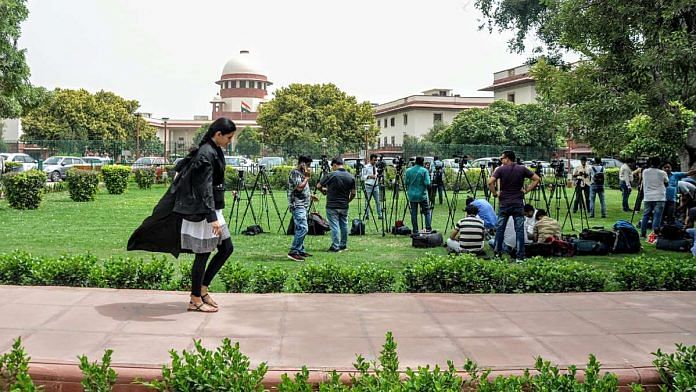Ruth Bader Ginsberg was once asked, how many women judges in the US Supreme Court would be sufficient. She said, “I would be satisfied when all nine judges on the US Supreme Court are women”. As a young female law student, that’s my take as well when it comes to women’s empowerment specifically in the field of law.
Recently, Justice Shoba Eapen has been appointed as an additional judge of the Kerala High Court. With this, the high court has scripted history by having seven female judges out of the total strength of 38. While this news gives us a glimpse of hope, India needs has a long way ahead when it comes to the appointment of women judges in the courts, especially in high courts and the Supreme Court, where their representation is abysmally low.
In many states of India, there is a 30 per cent horizontal reservation for women in the lower judiciary. Interestingly, the number of women drawn into the lower judiciary in these states is more than 30 per cent, which shows that they are getting into the courts because of their merit. This fact refutes the argument of many who say that there are not enough women judges in the courts because they lack talent and the requisite skill. Gender disparities in the judiciary can also be ascribed to a paucity of women in the collegium of High Courts as well as the top court, and a lack of adequate voices in such a forum. Categorically speaking, replacing the collegium system with some other system is not going to change the problem because we will have the same people or value systems. For instance, there is a popular perception of how a male and a female lawyer should argue. She should be graceful, easy to compromise with, and shouldn’t be aggressive. These prevalent double standards reflect bias.
In the High Court and Supreme Court, where the appointment is through the direct elevation from the bar to the bench, it is worth emphasising that the number of female advocates remains low, limiting the pool from which female judges can be recruited. Moreover, the yardsticks for judicial appointments, in direct elevation, are conventional and have gender biases.
Also read: Alarming gender disparity in judiciary: 4 women judges out of 33 in SC, 66 out of 627 in HCs
Current scenario and need for change
During the last 70 years, no significant attempt has been made to provide adequate representation for women in the High Courts or Supreme Court. Since its inception, we have seen only 11 women judges in the Supreme Court and no women CJI for that matter. Just 83 of the 680 judges in the high courts are women. Only 30 per cent of subordinate judges are female. Thankfully, the collegium, this time, took a great initiative by appointing three women judges to the Supreme Court in one go. Also, Justice Nagarathna’s ascension, in particular, is being viewed as the proverbial breaking of the glass ceiling, since she is set to become India’s first female Chief Justice in 2027.
Diversification brings positive institutional changes, and the judiciary needs to be more diverse. This calls for the inclusion of more women in the courts. To bring about a change, patriarchal mindsets and gender stereotypes need to be set aside first. For instance, there is a popular perception that women judges will be more sensitive towards the female side of the case and men, on the other hand, are neutral. But this is a misconception as in the Sabrimala Judgment, it was a female judge, Justice Indu Malhotra, who dissented on allowing women of all ages to enter Sabarimala temple and favoured protection of religious practices instead. Many such glaring examples of diversity in judicial reasoning can be seen if given an opportunity.
Also read: Women’s share in judiciary abysmal, SC saw only 11 judges since 1950: Justice Indira Banerjee
Women are outnumbering men in law school classrooms and are increasingly joining the corporate sector, but their underrepresentation in such decision-making institutions is deplorable. CJI NV Ramana’s call for 50 per cent reservation for women at all levels of the judiciary is commendable, but mere affirmative action can’t bring wholesome change. When the evaluation is based on competition, there is no dearth of women, and yet women continue to battle for better representation in the higher judiciary. What needs to be done away with is the patriarchal mindset and neutral balancing attitude.
The author is a student at National Law Institute University (NLIU), Bhopal. Views are personal




